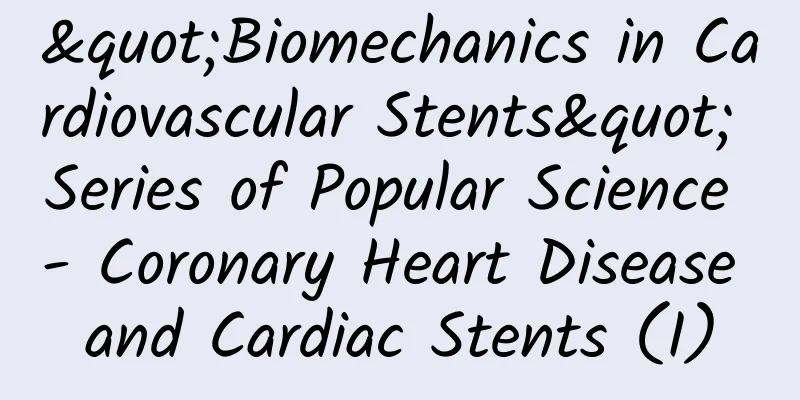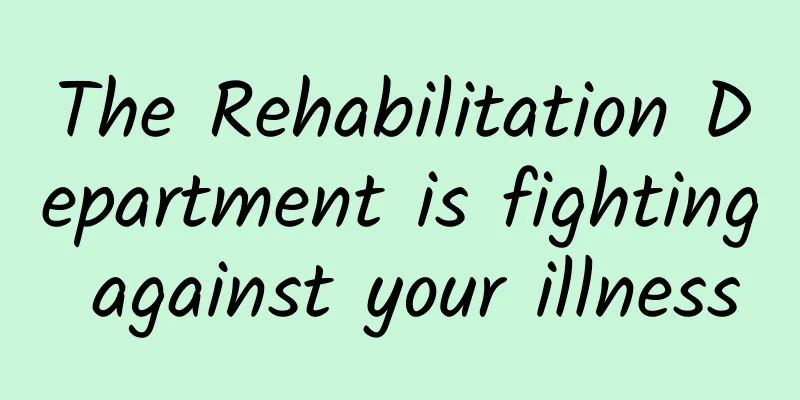"Biomechanics in Cardiovascular Stents" Series of Popular Science - Coronary Heart Disease and Cardiac Stents (I)

|
In the popular science series "Biomechanics in Cardiovascular Stents", today you will talk about coronary heart disease and heart stents. Welcome to follow. The cardiovascular system is one of the eight systems of the human body. It is composed of blood vessels and the heart. Blood vessels are distributed throughout the body and are the "transportation system" for transporting blood. Blood can transport oxygen and nutrients needed by body tissues to all parts of the body, and take away metabolic products of tissues such as carbon dioxide and other substances; it continuously transports substances needed for work to each cell in the body, maintaining the normal physiological functions of various organs and tissues. The heart is the "transportation hub" of this "transportation system" and the "power source" of blood flow. It drives blood to circulate in a certain direction. The coronary artery is the artery that supplies blood to the heart. The red branch-like blood vessels growing on the surface of the heart in the picture are coronary arteries. The coronary artery originates from the aortic sinus at the root of the aorta. It is called the coronary artery because it grows on the surface of the heart and has many branches, almost surrounding the heart, like a hat worn on the heart. The beating of the heart is completed by myocardial cells. The oxygen and nutrients transported by the coronary artery are the raw materials for myocardial cells to maintain normal functioning. The coronary artery is like a waterway leading to the heart, and blood cells are like a cargo ship, carrying oxygen through this waterway and delivering oxygen to myocardial cells so that the heart can get enough oxygen to power the blood flow normally. Since the coronary arteries play such a big role, when they get sick, human health and even life will be greatly threatened. Coronary heart disease is a type of coronary artery disease. Its full name is "coronary atherosclerotic heart disease". As the name suggests, coronary heart disease is when atherosclerosis occurs in the coronary arteries, which directly or indirectly causes a series of problems, usually leading to myocardial ischemia, angina pectoris, myocardial infarction, heart failure, and even pulmonary embolism, stroke and other fatal problems. Since coronary heart disease is so serious, what is the "culprit" atherosclerosis? Under the induction of some factors (genetics, obesity, high blood pressure and high blood lipids, smoking and drinking, etc.), lipids and some other substances will accumulate in the inner membrane of the arterial wall to form hardened plaques. The blood vessel wall at this location will thicken, calcify and gradually harden, and the blood vessel cavity will gradually narrow. Since the lipids accumulated in the inner membrane of the artery appear yellow porridge-like, this process is called atherosclerosis. When atherosclerosis occurs in the coronary arteries, it is called coronary atherosclerosis, which in turn causes coronary heart disease. For each individual, the causes of coronary heart disease are many and complex, such as obesity, smoking, drinking, unreasonable diet (high fat, high cholesterol, high calories, etc.), psychological factors, age, genetics, other diseases, etc. may all induce coronary heart disease. The normal coronary artery "channel" is unobstructed, and blood cells can carry oxygen to myocardial cells. However, once atherosclerosis occurs, the blood vessels will gradually become blocked, just like the "channel" is gradually filled with "reefs". When these "reefs" pile up into a mountain, the blood vessels will be completely blocked, and blood cells will no longer be able to transport oxygen to myocardial cells. As the symptoms of coronary atherosclerosis gradually worsen, blood cannot flow smoothly through the blocked area, and the heart will gradually become deprived of oxygen, eventually causing discomfort in the heart and even causing the heart to stop working, endangering life. On the other hand, when hardened plaques grow to a certain size, they may rupture and fall off, causing the blocky substances inside the plaque to enter the blood and travel along the blood flow, becoming dangerous blood clots. Such blood clots can easily block blood vessels in the heart, lungs, and brain, causing fatal diseases such as myocardial infarction, pulmonary embolism, and cerebral infarction. Since coronary heart disease is so terrible, how should it be treated? The next issue of the popular science series "Biomechanics in Cardiovascular Stents" - Coronary Heart Disease and Heart Stents (Part 2) will continue to tell you about it. We welcome your continued attention. References: [1]https://openstax.org/books/anatomy-and-physiology/pages/19-1-heart-anatomy [2] YY/T 0663.2-2016, Cardiovascular implants - Intravascular devices - Part 2: Vascular stents[S]. [3] Ma Ying, Liu Yesong. Stent implantation and percutaneous angioplasty for the treatment of extracranial carotid artery stenosis[J]. Chinese Journal of Tissue Engineering Research, 2014, 18(43): 7023-7027. Source: Beijing Biomedical Engineering High-tech Innovation Center (Chinese Society of Biomaterials Popular Science Education Base) / Materials Biomechanics Branch |
>>: Correctly understand anesthesia, you need to know these three points
Recommend
Jess3: Every day on Facebook - data information view
What does a day on Facebook look like? On a given...
Semiconductor Industry Association: Global chip sales in Q2 2015 were $84 billion, up 2% year-on-year
The Semiconductor Industry Association reported t...
Chinese Medicine Half Monthly Talk | Phragmites australis
· Interesting stories · Who says the river is so ...
How long does it take for the effect of abortion anesthetic to wear off?
Abortion is the most common gynecological surgery...
What is the reason for poor follicular development?
What is the most important thing for a couple to ...
What is the pain in the bone under the right breast?
Breast health is very important for women. Breast...
Why is there a lot of bleeding on the third day after medical abortion?
Medical abortion is the most direct and convenien...
Yellow vaginal discharge after menstruation
Menstruation is a very special period in a woman&...
How old is the child suitable for medical abortion?
As the number of cases of unexpected pregnancy is...
Prevention and care of myocarditis in children
Myocarditis is a common heart disease, especially...
What causes women's breasts to be large?
For a woman, breasts not only have the function o...
Picture of the location of ovaries and navel
The ovaries are generally located below the navel...
What kind of meat is in the beef balls that cost 9.9 yuan per pound?
Audit expert: Wang Guoyi Postdoctoral fellow in N...
Breast pain two days before menstruation
Is it normal to have breast tenderness two days b...
How do you know you are ovulating?
In today's society, very few women have heard...


![[Medical Q&A] Does a high-protein diet help muscle growth? What are the health risks?](/upload/images/67effc788fd07.webp)






